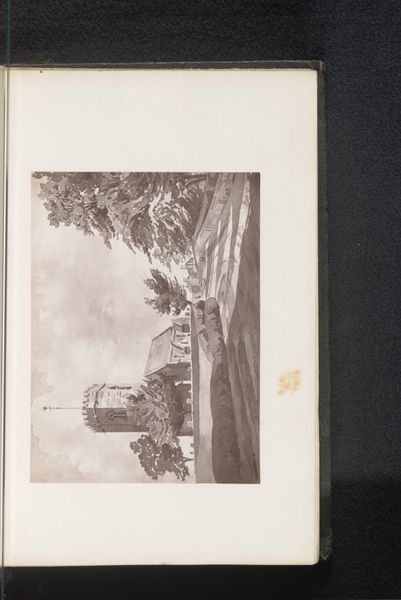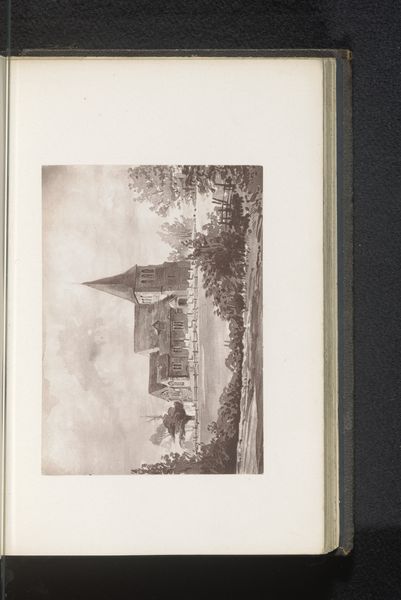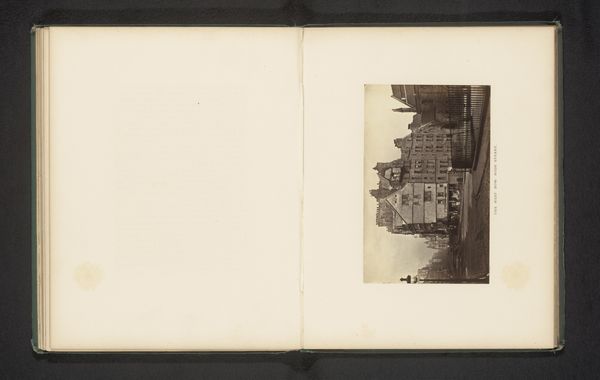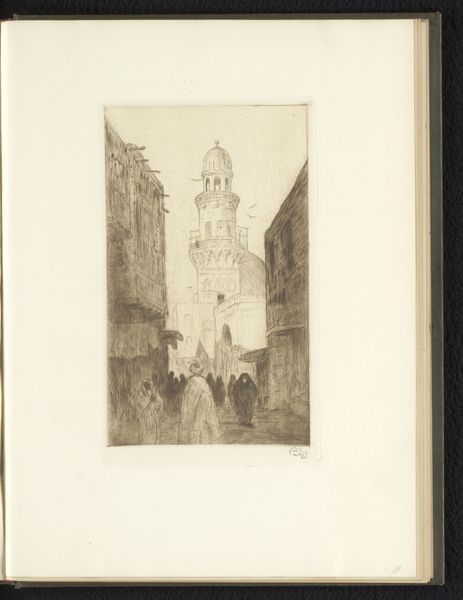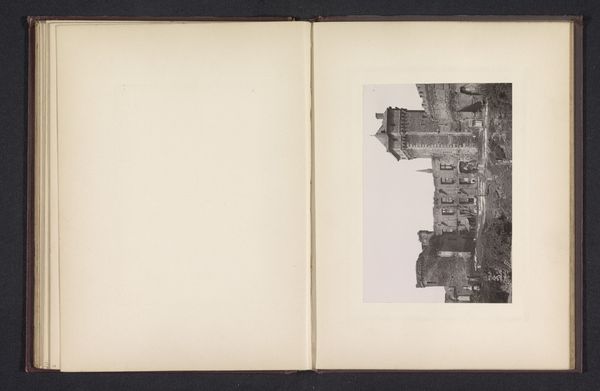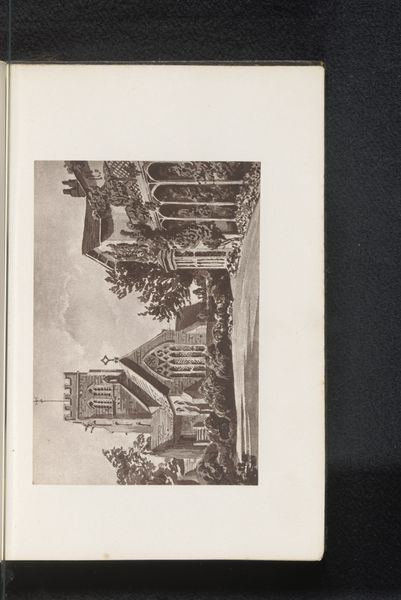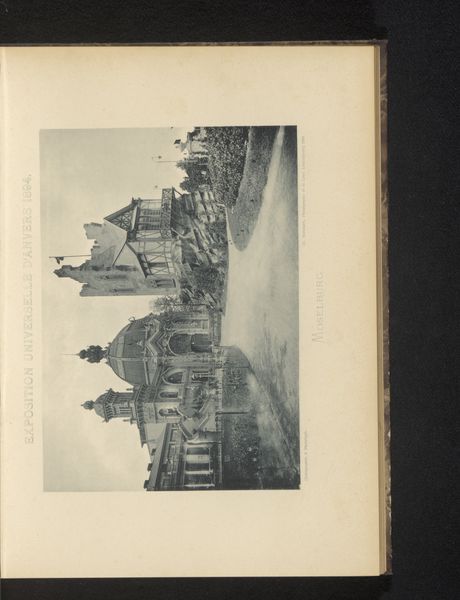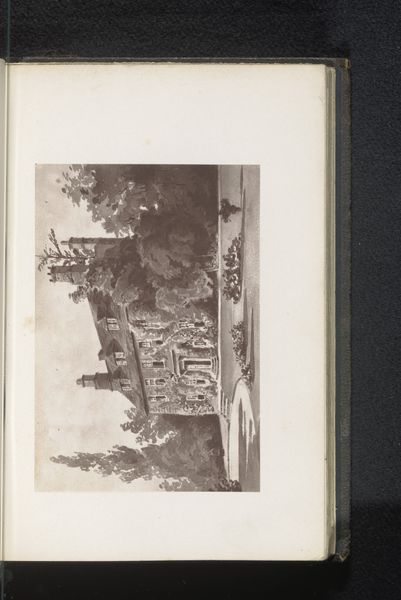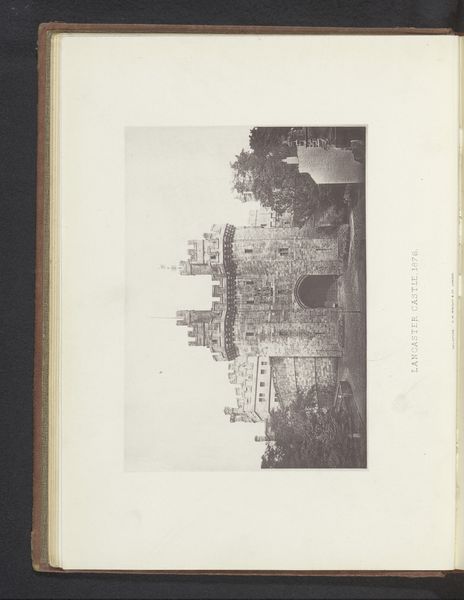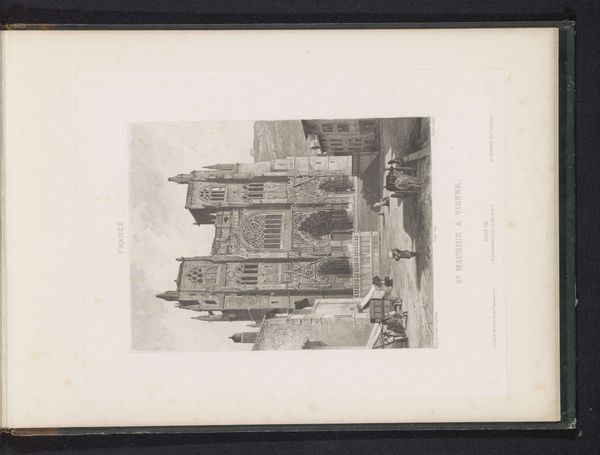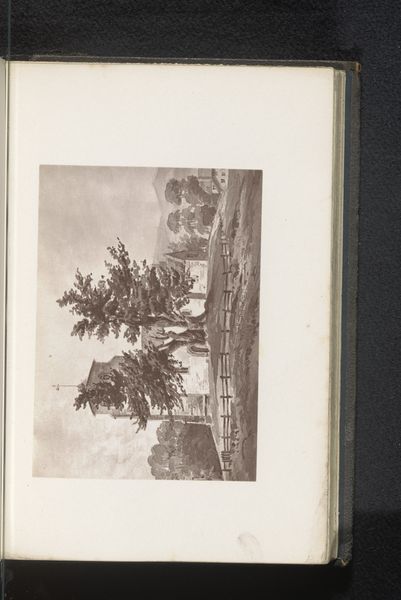
Fotoreproductie van een schildering, voorstellende een gezicht op Herstmonceux Castle before 1876
0:00
0:00
print, photography, albumen-print, architecture
# print
#
landscape
#
photography
#
albumen-print
#
architecture
#
building
Dimensions: height 83 mm, width 118 mm
Copyright: Rijks Museum: Open Domain
Curator: Here we have "Fotoreproductie van een schildering, voorstellende een gezicht op Herstmonceux Castle," a photographic print created before 1876 by an anonymous photographer. Editor: What immediately strikes me is the ethereal quality, despite the solid subject. The monochrome palette and the hazy details give it a dreamlike appearance. Curator: That's fascinating. Albumen prints were a common method of photographic reproduction during the Victorian era. These images were used to spread and communicate new visual cultures through printed imagery and albums. Architecture held enormous power as cultural representation and the images played a significant role in defining the national heritage. Editor: Yes, the light almost seems to dematerialize the stone. Observe the repetition of rectangular forms: the towers, the windows, it establishes a rhythm and gives a rigid structure and form that somehow contrasts to the atmospheric softness. Curator: Indeed. Photography enabled the Victorians to disseminate architectural views, and it's important to recognize photography’s democratizing effect on image dissemination. While painting was reserved for specific sectors of society, photography played a more significant role in image circulation. The development of architectural representation influenced perceptions and engagement within specific public sphere dynamics. Editor: And it really is more than just a documentary exercise. I believe the photographer captured more than just a record of Herstmonceux Castle. Note how he masterfully used tonal gradation, creating shadows that give this building a sense of three-dimensionality. Curator: Agreed. The existence of images, like this, provided individuals with concrete examples of idealized societal structures that played a pivotal role in constructing collective identity, a means through which notions of nationalism and shared heritage was nurtured and preserved. Editor: Seeing how the image holds these architectural spaces frozen in a dream-like vision definitely ignites curiosity. It compels one to question their place in time and consider a narrative. Curator: It's a wonderful encapsulation of an era, preserving visual data for future generations while speaking about the artistic and social climate of its day. Editor: A fascinating view through aesthetics!
Comments
No comments
Be the first to comment and join the conversation on the ultimate creative platform.

